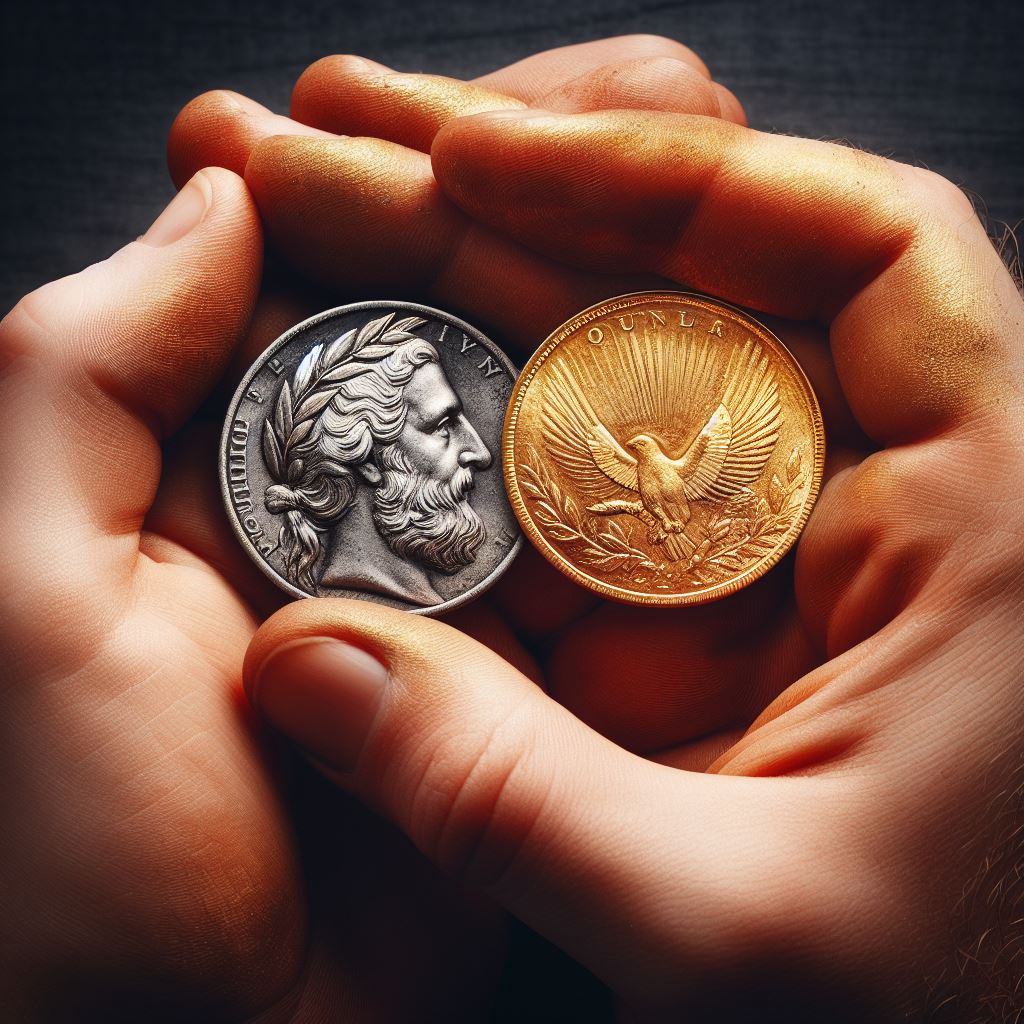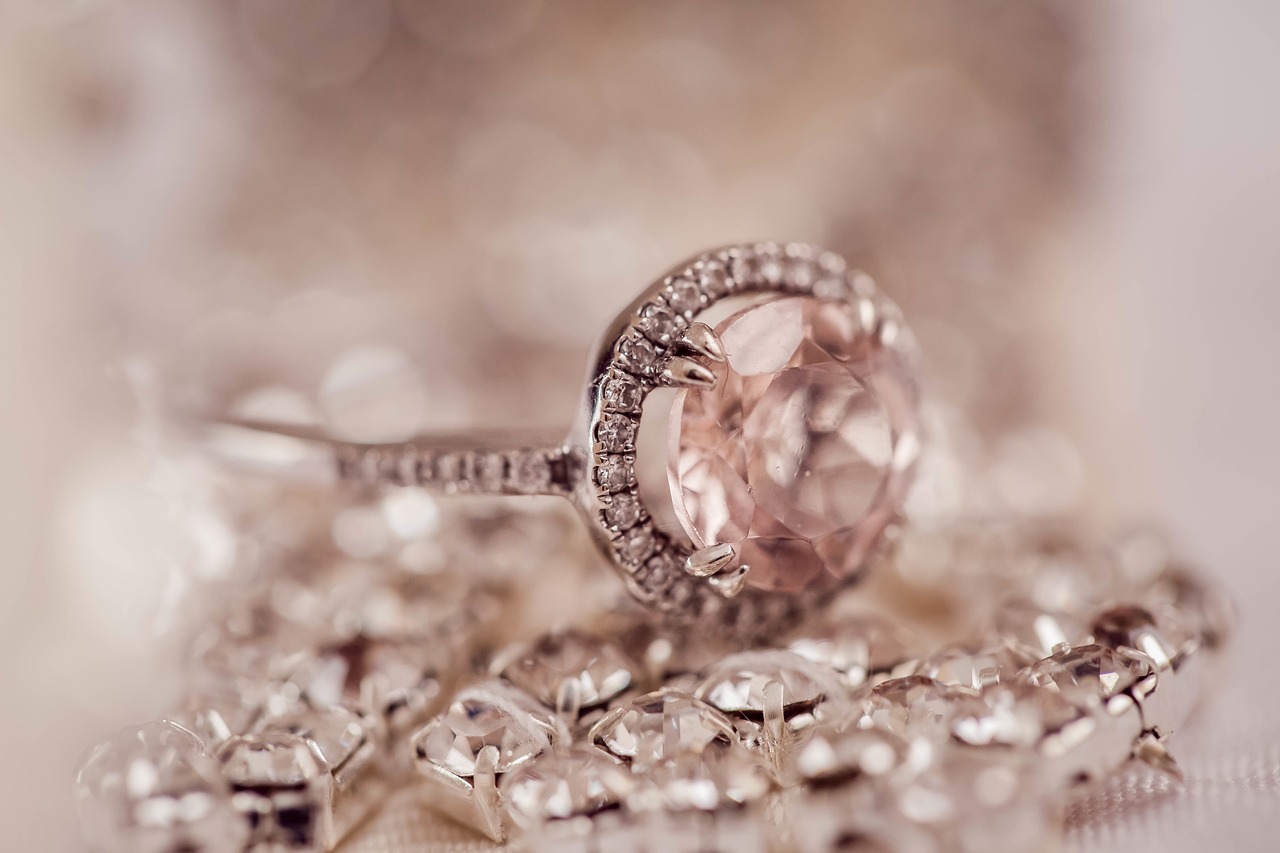Gold and silver jewelry have long captured the hearts of adornment enthusiasts with their timeless beauty and intrinsic value. These precious metals epitomize elegance, sophistication, and luxury, making them coveted materials for crafting exquisite accessories.
From ancient civilizations to modern-day fashion runways, gold and silver jewelry has remained a symbol of status and refinement. The allure of gold lies in its radiant yellow color, which exudes warmth and opulence.
Throughout history, gold has been associated with divinity, wealth, and power. It has adorned the bodies of pharaohs in ancient Egypt, embellished the regal outfits of monarchs during the Renaissance period, and continues to be a sought-after metal in contemporary jewelry design.
Silver, on the other hand, boasts a captivating luster that exudes a cool elegance. Its versatile nature allows it to seamlessly complement various styles and outfits.
Silver possesses a mystical allure that captivates both men and women alike. It is often associated with moon-inspired emotions such as serenity and grace.
As fashion evolves and trends shift towards individuality and uniqueness in personal style, combining gold and silver jewelry has emerged as an exciting concept worth exploring. By blending these two precious metals together in one piece of jewelry, designers create striking compositions that bridge tradition with innovation.
Historical Significance
Overview of the historical use of gold and silver in jewelry making
Gold and silver have been coveted for their beauty and rarity since ancient times. Both metals hold immense cultural and symbolic significance, leading to their widespread use in jewelry making throughout history.
Gold, with its lustrous yellow hue, has always been associated with wealth, power, and prestige. It was considered a divine metal by many civilizations due to its incorruptible nature and enduring brilliance.
Silver, on the other hand, dazzled with its radiant white glow and was often associated with the moon’s mystical properties. In ancient Egypt, gold held a prominent place in both religious ceremonies and personal adornment.
The Pharaohs were adorned head to toe in intricate gold jewelry as a symbol of their divine authority. Precious golden amulets were also placed within tombs to guide the deceased into the afterlife.
Silver was highly regarded by ancient Egyptians as well; it was used to craft exquisite necklaces, bracelets, rings, and even decorative elements for chariots. Moving eastward to Mesopotamia and Persia (modern-day Iraq and Iran), both gold and silver were highly prized by these ancient civilizations too.
Gold was often used as offerings to deities or as an emblem of power among rulers. Silver had a more versatile role; it was skillfully crafted into ornamental pieces such as diadems, torques (necklaces), bracelets adorned with gemstones or beads.
Exploration of ancient civilizations that combined both metals in their adornments
The blending of gold and silver in jewelry can be traced back thousands of years across different cultures worldwide. One notable example is found within the Greco-Roman world where combining these precious metals became increasingly popular during the Hellenistic period (323-31 BCE).
The Greeks’ fascination with beauty and harmony translated into the art of jewelry-making, where gold and silver coexisted harmoniously. Intricate gold filigree work was often combined with silver accents to create stunning pieces, such as necklaces, earrings, and crowns.
The ancient Mayans of Central America also embraced the combination of gold and silver in their jewelry. They believed gold represented the sun god while silver symbolized the moon goddess.
Combining these metals allowed them to express their reverence for both celestial bodies simultaneously. Elaborate gold and silver headdresses, pendants, nose rings, and ornate arm cuffs were crafted by skilled artisans to adorn royalty or individuals of high status.
In Asia, particularly in India and China, historical records reveal a long-standing tradition of combining gold with silver in jewelry making. In India’s rich cultural heritage, using both metals together dates back centuries.
The intricate craftsmanship known as Kundan utilizes a combination of pure gold (kundan) and foils made from fine silver to create exquisite pieces embellished with gemstones. Similarly, ancient Chinese artisans employed a technique called “gongshi,” blending gold and silver wires intricately to form delicate patterns on various jewelry items like hairpins, earrings, bangles.
The historical significance of combining gold and silver in jewelry is deeply rooted in diverse civilizations worldwide. This tradition not only highlights the aesthetic appeal but also speaks volumes about cultural values related to wealth, spirituality, symbolism, and craftsmanship that have endured through the ages.
Symbolism and Meaning
Analysis of the Symbolic Significance of Gold and Silver in Various Cultures
Throughout history, gold and silver have held great significance in numerous cultures, representing different concepts and values. Understanding the symbolism attached to these precious metals allows us to appreciate their combined use in jewelry on a deeper level. In many civilizations, gold has always been associated with wealth, power, and divine qualities.
It embodies the sun’s radiant energy, evoking feelings of warmth, abundance, and prosperity. Moreover, gold is often linked to immortality and spirituality due to its incorruptible nature.
Silver also possesses significant symbolic meaning across cultures. Renowned for its lustrous beauty and remarkable reflectivity, silver symbolizes purity and clarity of thought.
It has long been associated with the moon’s feminine energy – a symbol of intuition, healing powers, and protection against negative energies. Additionally, silver represents emotional balance and gracefulness.
Explanation of How Combining These Metals Can Enhance the Symbolism Behind Jewelry Pieces
Combining gold and silver in jewelry not only combines their physical attributes but also merges their symbolic representations. This fusion adds depth to the overall meaning behind these adornments.
When worn together, gold’s representation of wealth is complemented by silver’s association with purity. The combination can create a harmonious contrast that signifies the balancing forces in life – the yin-yang concept observed in several Eastern philosophies.
By combining both metals within a single piece of jewelry design or by layering different pieces together simultaneously made from gold or silver alone or both; designers can express unity between contrasting elements such as lightness with heaviness or strength with delicacy. Furthermore, combining gold and silver can also represent unity between masculine (gold) and feminine (silver) energies within an individual or relationship context—embodying both strength and grace, power, and compassion.
This interplay of symbolism adds depth and complexity to jewelry pieces, making them not only aesthetically appealing but also emotionally charged. The symbolic significance of gold and silver in diverse cultures provides a rich foundation for combined metal jewelry designs.
By merging the meanings associated with these precious metals, designers can create pieces that evoke wealth and purity, balance and contrast, as well as unity between masculine and feminine energies. The resulting combination imbues jewelry pieces with not only visual allure but also a profound narrative that resonates with individuals on a personal level.
Design Techniques for Combining Gold and Silver Jewelry
Introduction to Various Design Techniques
Combining gold and silver jewelry opens up a world of creative possibilities. Design techniques play a crucial role in achieving harmonious and visually stunning pieces. One such technique is layering, where gold and silver elements are stacked or intertwined to create depth and dimension.
Layering can be achieved by wearing multiple necklaces of different lengths or stacking rings of varying metal combinations on one finger. This technique allows for a personalized style that reflects individual taste.
Mixing metals is another design technique widely embraced by jewelry enthusiasts. It involves combining both gold and silver elements within a single piece of jewelry, such as earrings, bracelets, or pendants.
This technique offers a unique contrast between the warm tones of gold and the cool hues of silver, resulting in an eye-catching aesthetic. Two-tone designs are yet another popular method for combining gold and silver jewelry seamlessly.
These designs typically incorporate both metals side by side, either through braiding, weaving, or interlinking elements together. Two-tone pieces can be versatile additions to any collection as they effortlessly complement various outfits due to the versatile nature of the two metals.
Detailed Explanation of Each Design Technique
Layering enables wearers to showcase their creativity by combining multiple chains or strands with different thicknesses, textures, or pendant styles. For instance, layering delicate gold chains with thicker sterling silver chains creates an elegant contrast that catches the light beautifully against the skin.
Renowned jewelers like Tiffany & Co., Cartier, and Bulgari have embraced this technique in their collections by offering pre-layered necklaces featuring intricate combinations of rich yellow gold and lustrous silver. Mixing metals within a single piece allows for endless possibilities when it comes to design aesthetics.
By incorporating both gold and silver within earrings or bracelets, jewelers can create visually striking pieces that harmoniously blend the two precious metals. Renowned jewelry designer John Hardy, for example, skillfully combines gold and silver in his creations, often featuring textured silver with gold accents or vice versa.
The balance achieved through this technique adds a touch of sophistication to the overall design. Two-tone designs encompass an array of methods for combining gold and silver.
Braiding metals together is a popular approach, where strands of both gold and silver are intertwined to form an intricate pattern. This technique creates visually appealing jewelry pieces that showcase the distinct qualities of each metal while offering a unique texture to the wearer.
Renowned jewelers like David Yurman have successfully incorporated braided two-tone designs into their collections, showcasing exquisite craftsmanship. In addition to braiding, weaving is another technique where gold and silver elements are interlaced to create visually captivating patterns.
This method often involves meticulous attention to detail and precision craftsmanship to achieve seamless integration between the two metals. By expertly weaving strands of both materials together, artisans can produce stunning bracelets or pendants that exude elegance and sophistication.
Combining gold and silver jewelry through various design techniques not only allows for individual expression but also offers versatility in styling options. Whether layering chains, mixing metals within a single piece, or exploring two-tone designs with braided or woven elements – these techniques empower wearers to embrace their unique sense of style while enjoying the timeless beauty of combined gold and silver jewelry.
Practical Considerations
Choosing the Right Combination
When combining gold and silver jewelry, it is essential to consider factors such as skin tone, personal style, and occasion. Skin tone plays a crucial role in determining which metal tones complement one’s complexion. Individuals with warmer undertones tend to look best in yellow gold or rose gold, while those with cooler undertones can opt for sterling silver or white gold.
Personal style should also be taken into account; some may prefer a more subtle combination, while others may embrace bold contrasts. The occasion should guide your choice; simpler combinations may be suitable for everyday wear, while elaborate designs can add glamour to more special events.
Maintaining and Caring for Combined Gold and Silver Jewelry
To ensure the longevity of your combined gold and silver jewelry pieces, proper maintenance is crucial. Avoid exposing them to harsh chemicals or abrasive materials that could damage the metals or gemstones. When not worn, store your jewelry in separate compartments or soft pouches to prevent scratching against other pieces.
Regular cleaning using mild soap and warm water will help maintain their shine. For intricate designs that are harder to clean, consider using a soft toothbrush or seeking professional cleaning services periodically.
Unique Combinations
Exploration of Different Combinations
Combining various metals opens up endless possibilities for unique jewelry designs. One popular combination is rose gold with sterling silver—a stunning contrast between warm rose tones and cool silver hues that creates an elegant yet contemporary look. Another intriguing option is mixing white gold with yellow gold—a sophisticated blend of contrasting shades that exudes timeless charm and versatility.
Showcase of Contemporary Designers’ Successes
Contemporary designers have embraced the art of merging different metals to create captivating pieces of combined jewelry. Renowned names like XYZ Jewelry and ABC Designs have showcased their mastery in crafting exquisite jewelry that combines gold and silver harmoniously. Their innovative designs incorporate intricate patterns, textures, and gemstones to elevate the aesthetic appeal of the combined metals.
Niche Subtopics
Rare Combinations
In the realm of combined gold and silver jewelry, rare combinations like blackened silver with white gold or vermeil (gold-plated sterling silver) offer a distinct allure. Blackened silver paired with white gold creates a striking contrast, ideal for those seeking a bold and edgy look. Vermeil, on the other hand, combines the affordability of sterling silver with the luxurious appearance of gold—an excellent choice for those desiring an opulent impression without breaking the bank.
Exploration of Lesser-Known Techniques
Mokume-gane is a lesser-known technique that deserves attention when discussing combining metals in jewelry making. Originating in Japan, this traditional method fuses layers of different metals together through a labor-intensive process involving heat and pressure.
The result is unique patterns reminiscent of wood grain that can be further enhanced by adding gold or silver elements. Mokume-gane offers an exceptional way to create one-of-a-kind combined metal pieces with intricate textures.
Cultural Influences
Incorporation into Different Cultures’ Traditions
Different cultures have long embraced combining gold and silver in their traditional jewelry practices. For example, in Indian culture, Kundan jewelry combines gold foil along with precious gemstones set in intricately designed structures made of pure silver. In South American cultures like Peru’s ancient civilization, combining both metals symbolizes connections between heaven (gold) and earth (silver), representing harmony and balance.
Highlighting Specific Cultural Practices
Specific cultural practices demonstrate how combining these precious metals holds deep symbolism. In Egyptian culture, gold and silver jewelry was often worn to symbolize wealth and social status.
In Celtic traditions, the combination represents the intertwining of past and present, celebrating continuity and heritage. By exploring these cultural practices, we gain a broader understanding of how the blending of gold and silver has influenced civilizations throughout history.
Conclusion
The combination of gold and silver in jewelry design offers endless possibilities for creating exquisite pieces that cater to individual styles, occasions, and cultural traditions. Whether it’s through thoughtfully choosing compatible metals based on skin tone or experimenting with rare combinations like blackened silver with white gold or vermeil, this unique blend allows for personal expression while adding depth to one’s jewelry collection.
With the expertise of contemporary designers who skillfully merge these metals in innovative ways and lesser-known techniques like mokume-gane that bring forth captivating textures, the artistry behind combined gold and silver jewelry continues to evolve. By embracing these combinations rooted in historical significance, we not only appreciate the cultural influences but also highlight the enduring investment value inherent in creating timeless treasures that can be passed down through generations.





